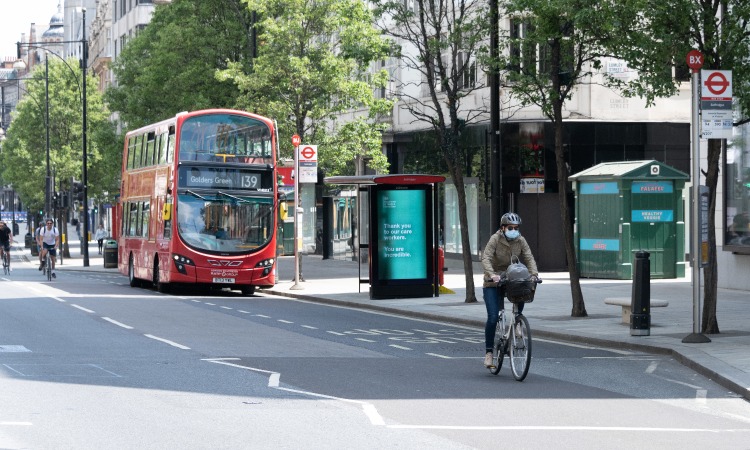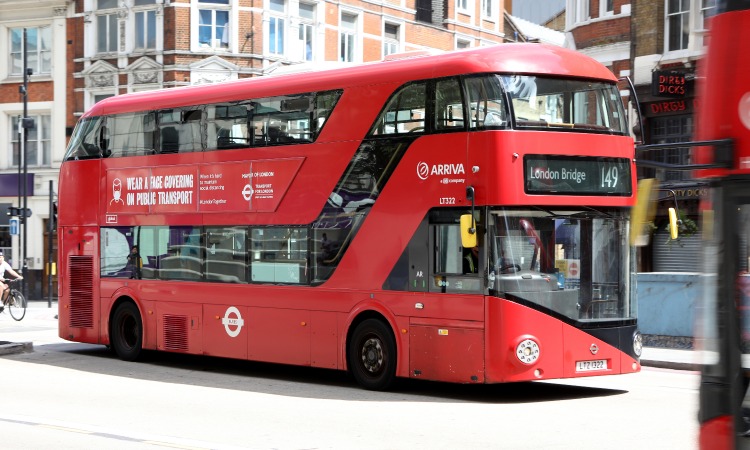TfL proposes reduction of bus network to meet government requirements
- Like
- Digg
- Del
- Tumblr
- VKontakte
- Buffer
- Love This
- Odnoklassniki
- Meneame
- Blogger
- Amazon
- Yahoo Mail
- Gmail
- AOL
- Newsvine
- HackerNews
- Evernote
- MySpace
- Mail.ru
- Viadeo
- Line
- Comments
- Yummly
- SMS
- Viber
- Telegram
- Subscribe
- Skype
- Facebook Messenger
- Kakao
- LiveJournal
- Yammer
- Edgar
- Fintel
- Mix
- Instapaper
- Copy Link
Posted: 2 June 2022 | Intelligent Transport | No comments yet
The proposal outlines how TfL will ensure the bus network continues to provide Londoners with the service they need, while responding to government requirements to make significant savings.


Credit: Transport for London
Transport for London (TfL) has announced that it has published proposals for consultation to reshape the central and inner London bus network, in order to meet the UK government’s requirement to reduce the capital’s bus service levels.
This six-week consultation sets out how TfL will ensure the bus network continues to provide Londoners with the service they need while responding to government requirements to make further savings.
Before providing emergency funding to enable TfL to keep operating throughout the COVID-19 pandemic, the government set out a number of conditions, including requiring a plan setting out how to achieve significant financial savings and reduce service levels. This plan included reducing the extent of the bus network by four per cent by 2024/25.
TfL has worked to ensure that the bus kilometres removed from the network are in locations that already have a higher provision of buses. The bus routes proposed for changes or withdrawal are already well served by other routes, meaning services would continue to meet demand and allow passengers to still make the same journeys, with an additional interchange in some instances.
Transport for London publishes long-term plan for UK capital city’s buses
While buses remain the most popular form of transport in London, demand on many central and inner London bus routes has reduced. Ridership on some routes has been declining since 2014, and by 2019 passenger levels had fallen by nine per cent as improvements to rail services and walking and cycling infrastructure provided new alternatives, especially in central and inner London.
TfL’s current short-term funding deal expires on 24 June 2022. If a sustainable new agreement cannot be achieved, bus services could be required to be reduced by nearly 20 per cent – an outcome that TfL is working hard to avoid.
Deputy Mayor for Transport, Seb Dance, said: “TfL has looked carefully at the routes affected in order to reduce the impact on passengers as much as possible. Routes changed are ones where there are very similar existing services or where passengers would make use of the Mayor’s ‘Hopper’ fare to reach their destination. If TfL is to avoid further cuts which would damage our city’s economic recovery from this pandemic, the government must do the right thing and come forward with a long term funding deal to support the capital’s public transport – as governments of almost all other major global cities do.”
Geoff Hobbs, Director of Public Transport Service Planning at TfL, said: “Adapting the capital’s bus service – such a significant part of our transport network – is what we have always done to ensure it keeps up with changing needs of Londoners. The flexible nature of the bus network means we can respond to changes in demand, both now and in the future. We know that these plans will have some impact on some of our customers, but we are trying very hard to ensure that we can still have the right level of service where it is needed and can deliver our long-term positive vision for the bus network.”
Nick Bowes, Chief Executive of Centre for London, said: “While patterns of use are always changing and services need adjusting accordingly, the fear is decisions are being taken about future usage based on current passenger numbers, which aren’t a true reflection of where numbers might be in six months or two years time. Cutting services could also provoke a downward spiral in usage, returning London’s buses to the bad old days before the improvements over the past two decades. What is needed is an urgent agreement between the Mayor and the government on a long-term funding package to give TfL the stability to give London the public transport it desperately needs”.


Credit: Transport for London
TfL is also inviting feedback on plans to help withdraw some individual bus routes or sections of routes where they are duplicated by other high-frequency services, or are very close to alternative stops. These changes would ensure buses can operate where they are most needed.
Currently, 19 per cent of journeys made on central London bus routes involve a change of bus. Under its proposals, TfL expects the proportion of customers who would need to change buses to increase to around 24 per cent. The Hopper Fare, which allows unlimited journeys within the hour for the price of a single fare, would ensure most customers don’t pay more and those aged under 18 and over 60 would continue to benefit from free bus travel.
The plans include ensuring there are high frequency services at interchanges to keep waiting times to a minimum and TfL Go, Journey Planner and improved information on buses and at stops will help customers plan the quickest route possible. To enhance safety where passengers have to change bus, TfL will improve the local environment with better lighting and street design.
The savings generated will also contribute to TfL realising the long-term vision set out in its Bus Action Plan of an attractive, green bus service for all Londoners. They will protect the investment needed to meet the Mayor’s targets for a zero carbon city by 2030. Catering to the shifting landscape in outer London will also help achieve the target of 80 per cent of journeys being made by sustainable transport modes by 2041.
Related topics
Accessibility, Fleet Management & Maintenance, Mobility Services, Passenger Experience, Public Transport
Related modes
Bus & Coach
Related cities
London
Related countries
United Kingdom
Related organisations
Transport for London (TfL), UK Government
Related people
Geoff Hobbs, Nick Bowes, Seb Dance








